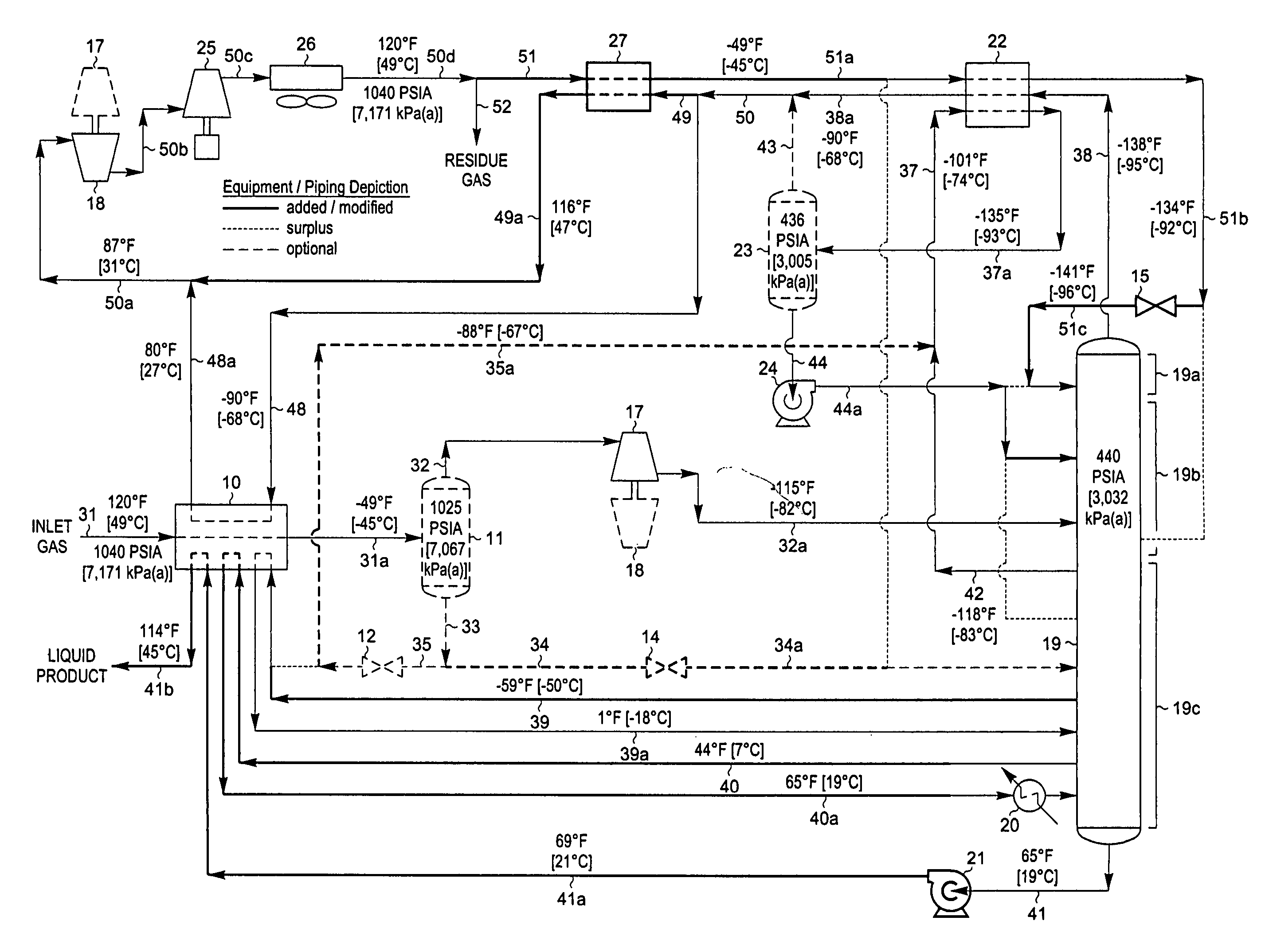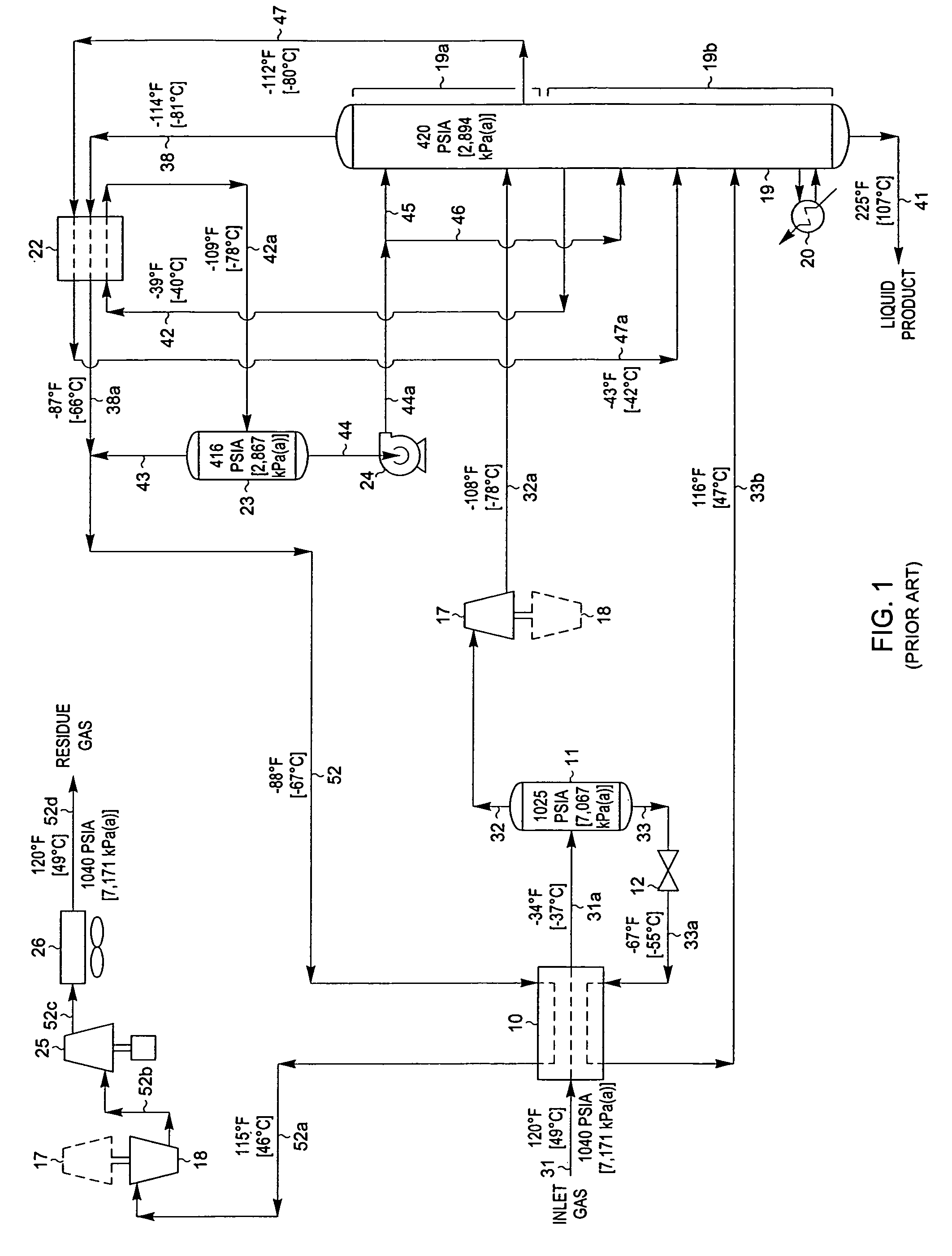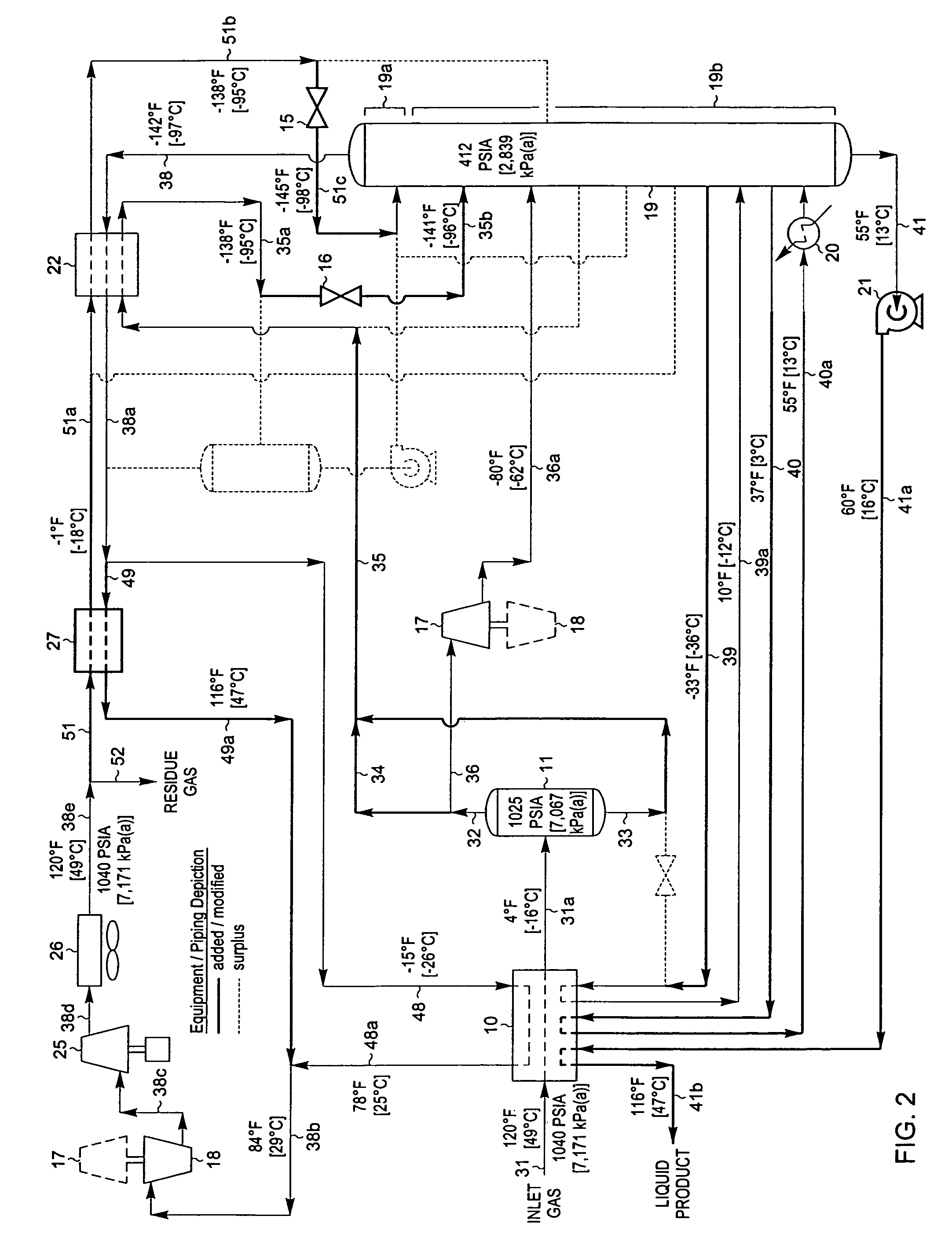Hydrocarbon gas processing
a technology of hydrocarbon gas and processing equipment, applied in the direction of refrigeration and liquidation, lighting and heating equipment, solidification, etc., can solve the problems of increasing capital costs, not getting the ideal situation, and not being able to process feed gas
- Summary
- Abstract
- Description
- Claims
- Application Information
AI Technical Summary
Benefits of technology
Problems solved by technology
Method used
Image
Examples
example 1
[0046]FIG. 3 is a process flow diagram illustrating how the design of the processing plant in FIG. 1 can be adapted to operate at a higher C2 component recovery level in accordance with the present invention. The process of FIG. 3 has been applied to the same feed gas composition and conditions as described previously for FIG. 1. However, in the simulation of the process of the present invention as shown in FIG. 3, certain equipment and piping have been added (shown by bold lines) while other equipment and piping have been removed from service (shown by light dashed lines) as noted by the legend on FIG. 3 so that the process operating conditions can be adjusted to increase the recovery of C2 components to about 97%. Since the feed gas composition and conditions considered in the process presented in FIG. 3 are the same as those in FIG. 2, the FIG. 3 process can be compared with that of the FIG. 2 process to illustrate the advantages of the present invention.
[0047]In the simulation o...
example 2
[0071]FIG. 3 represents the preferred embodiment of the present invention for the temperature and pressure conditions shown because it typically requires the least equipment and the lowest capital investment. An alternative method of producing the supplemental reflux stream for the column is shown in another embodiment of the present invention as illustrated in FIG. 5. The feed gas composition and conditions considered in the process presented in FIG. 5 are the same as those in FIGS. 1 through 3. Accordingly, FIG. 5 can be compared with the FIG. 2 process to illustrate the advantages of the present invention, and can likewise be compared to the embodiment displayed in FIG. 3.
[0072]In the simulation of the FIG. 5 process, inlet gas enters the plant as stream 31 and is cooled in heat exchanger 10 by heat exchange with a portion (stream 48) of cool distillation stream 38a at −79° F. [−62° C.], demethanizer liquids (stream 39) at −47° F. [−44° C.], demethanizer liquids (stream 40) at 44...
PUM
 Login to View More
Login to View More Abstract
Description
Claims
Application Information
 Login to View More
Login to View More - R&D
- Intellectual Property
- Life Sciences
- Materials
- Tech Scout
- Unparalleled Data Quality
- Higher Quality Content
- 60% Fewer Hallucinations
Browse by: Latest US Patents, China's latest patents, Technical Efficacy Thesaurus, Application Domain, Technology Topic, Popular Technical Reports.
© 2025 PatSnap. All rights reserved.Legal|Privacy policy|Modern Slavery Act Transparency Statement|Sitemap|About US| Contact US: help@patsnap.com



